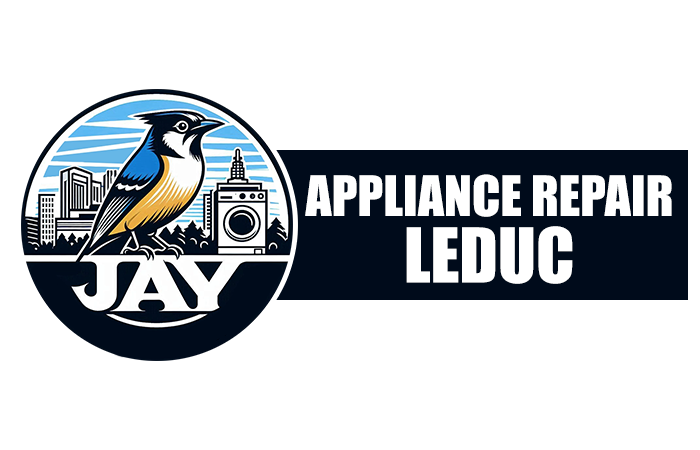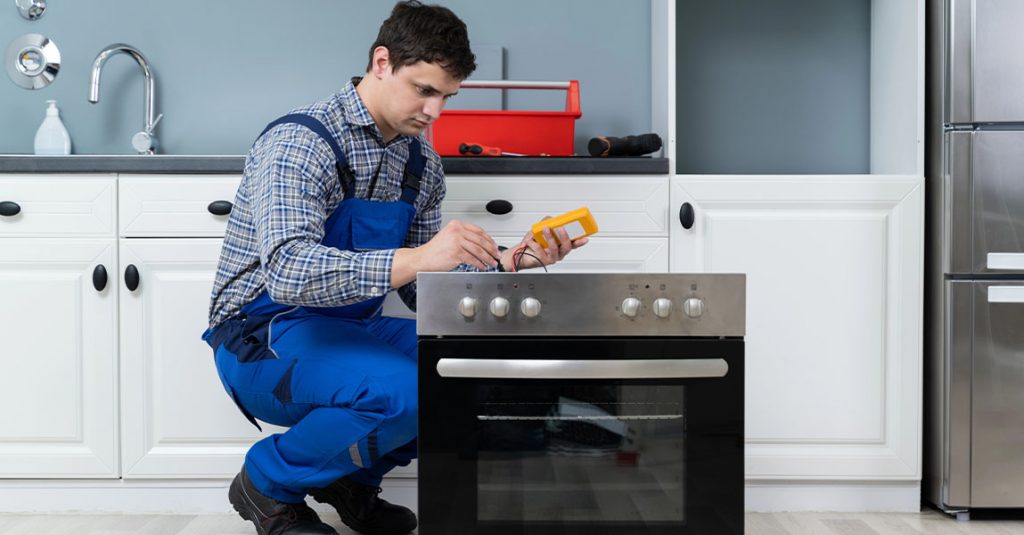A stove that won’t stop sparking can be both annoying and concerning. The repetitive clicking sound usually happens when one or more ignition switches get stuck in the closed position, keeping the spark system energized even when the burner is off. While this issue often looks small, leaving it unresolved can lead to electrical damage or prevent the burners from lighting correctly.
Understanding Why Stove Burners Spark
Every time you turn a burner knob, it sends a signal through an ignition switch to the spark module, which creates the visible spark that lights the gas. Once the flame ignites, that circuit should open, and the clicking should stop. When the ignition switch sticks closed, the circuit remains active, and the stove keeps sparking endlessly.
Sometimes, this happens only on one burner, but in many cases, it affects all burners because the switches are wired together. The constant clicking means electricity is still being sent to the igniters, even if the burners are off.
How Moisture Can Cause Continuous Sparking
Moisture is one of the most common reasons an ignition switch gets stuck. A simple spill or even steam from boiling water can seep into the knob area and short the switch. When this happens, the electrical contacts inside the switch may stay closed until they dry out.
If your stove began sparking after cooking a large meal or cleaning the surface, try unplugging it and leaving it to dry for several hours. You can speed up the process by using a fan or gentle airflow, but avoid using heat directly. Once the moisture evaporates, the switch may reset and function normally again.
Identifying a Stuck Ignition Switch
When drying doesn’t help, the issue often lies in the ignition switch itself. The switch can wear out or get permanently stuck from grease buildup or corrosion. Signs of a defective switch include:
- The stove clicks even when all knobs are off.
- The sparking stops when a specific knob is wiggled.
- The clicking returns when that same knob is touched again.
If you suspect one switch is the problem, you can isolate it by disconnecting power, removing the control knobs, and inspecting for visible residue or discoloration. However, because these parts connect to live voltage, it’s best not to perform deep electrical work unless you are confident and qualified.
Why the Spark Module May Be Involved
The spark module is another possible source of the problem. Even if all switches work properly, a failing module can send power continuously to the igniters. These modules are small boxes usually mounted beneath the cooktop. They can fail from age, heat exposure, or internal shorts.
To determine if the module is at fault, technicians test the voltage output while the burners are off. If the switches test open but the module still sends power, replacing the module is the logical next step.
This kind of diagnosis requires both a multimeter and experience working with live appliance circuits, which is why homeowners often prefer calling trained professionals who specialize in appliance repair services in Leduc. They can test the circuit safely, replace parts correctly, and ensure the problem does not return.
The Role of Cleaning and Maintenance
Even though most people clean their stovetops regularly, debris often finds its way underneath the knobs and burner caps. Food particles, grease, and moisture combine to create a sticky residue that traps electrical components and makes the switches malfunction.
To prevent buildup, remove the burner caps and knobs every few weeks and wipe the area beneath with a slightly damp cloth. Avoid spraying cleaner directly near the ignition switches, as liquid can seep into the mechanism. If you use a degreaser, apply it to the cloth first and then clean gently around the knobs.
This simple step not only prevents future sparking issues but also keeps your stove operating efficiently and safely.
How to Safely Troubleshoot at Home
If your stove starts clicking nonstop, there are a few safe actions to take before scheduling service.
First, unplug the stove or turn off the circuit breaker. This immediately stops the sparking and prevents wear on the ignition system. Next, dry any moisture around the knobs. Wait at least a few hours, then restore power and check if the clicking stops.
If it persists, try removing one knob at a time to see if one burner’s switch is the culprit. When removing knobs, look for grease or debris that could be holding the switch in place. Gently clean the area and reinstall the knob.
If the clicking continues after this basic cleaning, it’s time to contact a technician. Working with live wiring or internal gas connections requires skill and proper tools, and attempting it without training can lead to electrical shock or gas leaks.
Preventing Future Ignition Problems
Most ignition switch problems develop gradually. Regular care and mindful use can help prevent them. Here are a few preventive habits:
Keep liquids and steam away from the knobs as much as possible. When boiling large pots or simmering sauces, use back burners to avoid moisture reaching the ignition area.
Wipe spills immediately, especially those containing sugar or oil, since they can harden and trap the switch in place.
Use a damp cloth instead of spraying cleaners directly on the control panel.
Unplug the stove if you plan deep cleaning or removing control knobs to reduce electrical risk.
These small steps can extend the lifespan of your ignition switches and save you from unnecessary repair calls.
When the Problem Returns After Repair
In some cases, a repaired or replaced switch may fail again after a few months. This often points to a larger issue, such as excess heat buildup from a nearby burner, misaligned spark electrodes, or wiring insulation that has degraded.
A technician can inspect the wiring harness and ensure the switches are rated for the correct current. If multiple switches fail repeatedly, upgrading the full switch harness is usually more reliable than replacing single components.
Some stoves also have design flaws where water or oil can easily enter the control area. For these models, adding a small rubber washer under each knob can provide an effective barrier without affecting performance.
The Connection Between Power Surges and Stove Issues
Power fluctuations can also damage the ignition system. The spark module is particularly sensitive to sudden voltage spikes, which can occur during storms or grid maintenance.
If your home experiences frequent surges, consider using a surge protector for your stove circuit. This inexpensive step protects both the electronic ignition and other internal controls.
You can also have an electrician check the outlet grounding and voltage stability. Preventive electrical care is often overlooked, but it significantly reduces the risk of repeated ignition problems.
Why Professional Diagnosis Matters
Although drying or cleaning can sometimes solve the issue, continuous sparking is usually a sign that the ignition circuit needs professional attention. The repair process involves handling live electrical parts and sometimes removing gas components, both of which carry risk.
A qualified technician will use electrical testing tools to check voltage, resistance, and continuity throughout the system. This ensures accurate identification of whether the ignition switch, spark module, or wiring is responsible.
To ensure reliable service, we always recommend choosing experienced local specialists who handle both gas and electric stove repairs. They can perform the work safely and test the system thoroughly before leaving your home.
If you are in the area and need prompt assistance, you can always contact us to schedule an inspection. Our goal is to ensure your stove runs quietly and safely again.
When a Replacement May Be More Practical
For older stoves, replacement can sometimes be more cost-effective than repeated repairs. If your unit is more than ten years old and has ongoing ignition or heating problems, the cost of replacing switches, wiring, and modules can add up quickly.
Before deciding, have a technician evaluate the full condition of the stove. They can assess whether other parts like the gas valves or temperature sensors are showing signs of wear. Knowing the bigger picture helps you choose between repair and replacement based on long-term reliability, not just short-term fixes.
How Environmental Conditions Affect Performance
Humidity, temperature fluctuations, and even the type of cleaning products used in your kitchen can affect electrical components inside a stove. Homes with high humidity, such as those near open kitchens or where ventilation is limited, often experience recurring ignition issues.
Running the range hood regularly and ensuring good air circulation helps keep the switches dry. Simple ventilation improvements can often make a noticeable difference in how long the ignition system lasts.
Understanding the Risks of Ignoring the Problem
A constantly sparking stove is not just an inconvenience. Prolonged sparking strains the ignition transformer and can cause internal arcing, which increases the risk of electrical failure or even minor shocks. In rare cases, it can also trigger gas flow issues if the system is repeatedly ignited while burners are off.
Addressing the issue early prevents unnecessary wear on components and ensures your kitchen remains safe.
The Importance of Proper Electrical Grounding
Many modern stoves depend on proper grounding to operate safely. If your outlet is not grounded correctly, the spark circuit can behave erratically, causing continuous clicking or uneven sparking.
Electricians can test and correct grounding issues quickly. This small check can prevent future ignition system failures and improve the overall performance of the appliance.
Keeping Track of Small Changes
One helpful tip often overlooked is to take note of how your stove behaves after cleaning or cooking. If the clicking starts after certain conditions, you can share that information with the technician. It helps identify whether moisture, residue, or a mechanical fault is to blame.
Documenting small patterns in appliance behavior can save time and reduce the cost of diagnosis later.
FAQ
Why does my stove click when it’s off?
A stuck ignition switch or faulty spark module is usually the cause. The switch can stay closed from moisture or residue buildup, keeping the igniters active.
Can I keep using the stove if it keeps clicking?
It’s best not to. The continued sparking can wear out electrical components and increase the risk of short circuits. Unplug it and schedule service.
How do I know if it’s the switch or the spark module?
If one burner causes the clicking, the switch is likely the issue. If all burners click, the spark module may be at fault. A technician can test both components safely.
Does humidity affect the ignition system?
Yes. High humidity or steam from cooking can temporarily cause sparking by creating moisture inside the switch. Allowing the stove to dry usually resolves it.
Is this an expensive repair?
The cost depends on the stove model and whether the switch or module needs replacement. In most cases, it’s an affordable fix compared to replacing the entire appliance.

